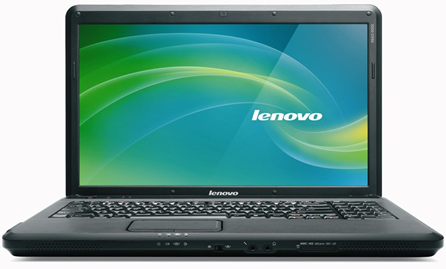- Tried KDE 4 in Fedora Linux 12. Still as unusable as ever. #
- Mitter looks like a really simple (but nice) Twitter app for Gnome. #
- Mitter turned out to be too simplified. No way to close it or to switch between different streams. Trying out pino. Also sweet. :) #
- I favorited a YouTube video — Konica Minolta chooses Google Apps http://youtu.be/ORHFwcRhgDY?a #
- I favorited a YouTube video — The Joker's Magic/Pencil Trick (High Quality) http://youtu.be/2KX3OriDpgg?a #
Category: All
All posts across the whole website belong to this category. They might also belong to some other categories as well, but this one holds all of them. Hence the descriptive name – All.
Diggnation week
I officially call this week a Diggnation week. Not that I have anything to do with Diggnation except being a fan, but you’ll get what I mean in just a second. First, on Monday, while shopping at Carrefour supermarket, I came across Michelob lager bottles. Michelob is an American brewery which used to sponsor several Diggnatino episodes, and Kevin and Alex even did a tour of the brewery. Not a particularly great beer (here in Europe we are blessed with a variety of excellent beers), but not a bad one either.
Secondly, I was waiting for a fresh episode of Diggnation to come out and give me an atmospheric reason to chuck the first bottle and enjoy the second. And what did Diggnation do? They came up with probably their best live show episode ever. Episode #246 in Austin, Texas. It started off slowly, but it turned epic with Leo Laporte streaming a live TWiT show while crowd surfing (fast forward 40 minutes or so). And then it went even crazier with Robert Rodrigez himself showing up at the show and doing a brief interview about an upcoming Predators movie. In the words of Alex Albrecht: “What??!!!”
P.S.: If you watched a few episodes of Diggnation and haven’t got hooked, don’t worry. I skipped quite a bit of Diggnation history. Until I saw them with my own two eyes back in Amsterdam. The guys are awesome!
Lenovo G550 laptop
A couple of days ago I bought two Lenovo G550 laptops – one for me, one for my wife. After spending a day browsing all the online shops and driving around all computer outlets in the city, I decided that this is the best option available.
Specifications: Dual-core 2Ghz Intel CPU, 15.6 inch glossy screen (WXGA, maximum resolution 1366×768), 4 GB of RAM, 250 GB hard disk, a bunch of USB ports, HDMI out, DVD writer, WiFi, and all the standard stuff, weighting at around 2.7 kilograms. Battery life is around 4 hours. Price: 500 EUR + 15% VAT = 575 EUR.
Both machines are running Linux (Fedora 12) already, even though they were coming with some Windows pre-installed. I wouldn’t know which one since I haven’t even booted into that once. Fedora Linux installation was straight-forward and everything worked, except for the wireless networking, which needs an extra step to enable those Broadcom drivers. Gladly, the required step is widely covered in the blogosphere. – basically, enable RPM Fusion yum repository, install kmod-wl package, and reboot your machine.
Everything is working find and I really enjoy the laptop, except for a few things that annoy me with its keyboard. The layout is somewhat weird. First of all, I am not used to having a number pad on a laptop keyboard. But that’s OK – if there is space, then why not, right? Well, there is space, but I think it would have been utilized better for Home, End, PgUp, and PgDn keys. As they are now, PgUp and PgDn are located next to navigation arrow keys and Home/End keys are only accessible through a Fn key, which is really strange. On top of that, Insert and Delete keys are in a different part of the keyboard – on top of the Backspace key. And while I don’t use Caps Lock all that often, some people will notice that Caps Lock indicator is missing, as well as NumLock and ScrollLock. What can I say? That’s one weird keyboard layout.
Other than that though there is nothing that I can complain about. The machine is nice and cool and pleasant to use. My wife seems to enjoy it as well.
OpenSSH 5.4 released
Now that I have a bit more time on my hands, I am catching up with all the RSS feeds, news, and announcements that I’ve missed recently. One of them was the release of OpenSSH 5.4 – a tool for pretty much every Linux user. There are a few interesting bits in the changelog:
Added a ‘netcat mode’ to ssh(1): “ssh -W host:port …” This connects stdio on the client to a single port forward on the server. This allows, for example, using ssh as a ProxyCommand to route connections via intermediate servers.
and
Add a ‘read-only’ mode to sftp-server(8) that disables open in write mode and all other fs-modifying protocol methods.
Also, it was mentioned that sftp got a whole lot of improvements, including tab completion, user-friendly sizes option, recursive transfers, etc.
Overall, a very welcome release.
Open Source Survey Results from The 451 Group
Last year I participated in the Open Source Survey ran by The 451 Group, who are well known for their analysis and research technology and business trends. Back in December they emailed me the results of the survey. Unfortunately, it sort of got lost in my mailbox and never had the time to read it. Now, cleaning up the stuff, I came across the PDF file with survey results. While parts of it are rather predictable it is still an interesting read.
Lower cost is still the top reason an organization decides to use open source software, but flexibility has become a more significant factor in recent years, and is now cited as the biggest post-adoption benefit of open source. Meanwhile, vendor lock-in appears to have become less of a concern. With nearly half of our survey respondents citing cost, we believe it will continue to be the leading factor driving consideration of open source. While flexibility, mitigation of vendor lock-in and even reliability will continue to be significant factors, the cost element is reinforced by the time-to-market and time-to-value advantages of open source software.

